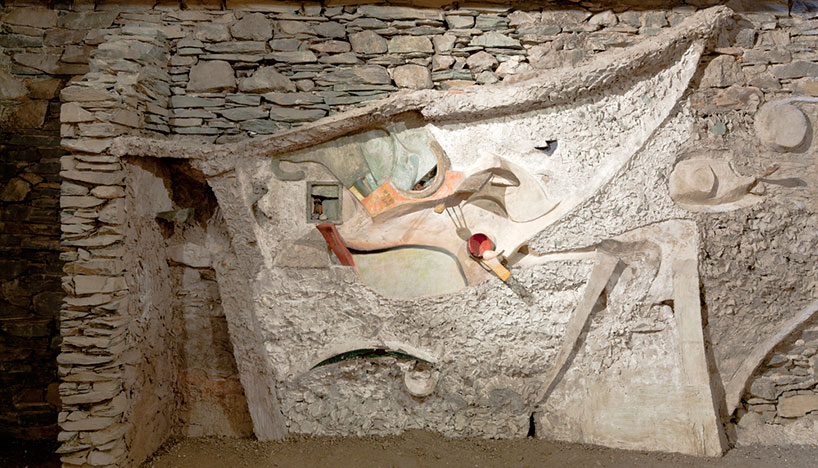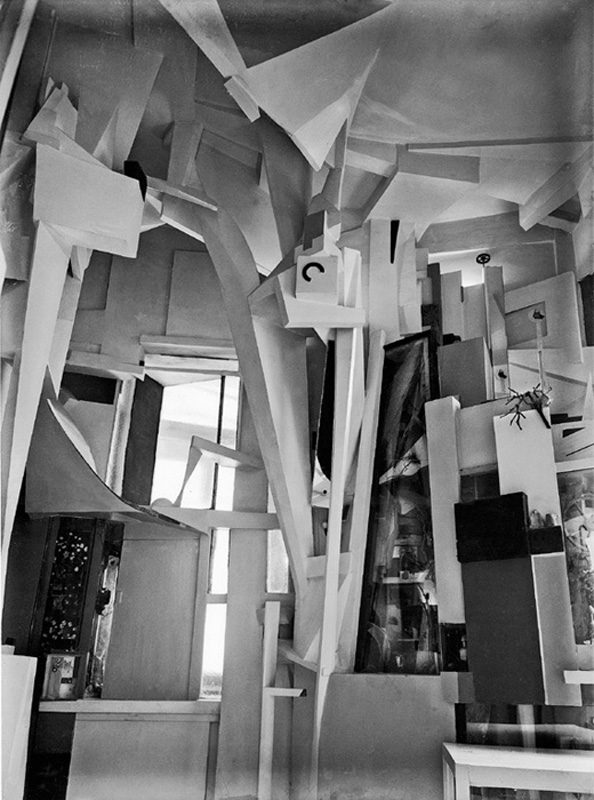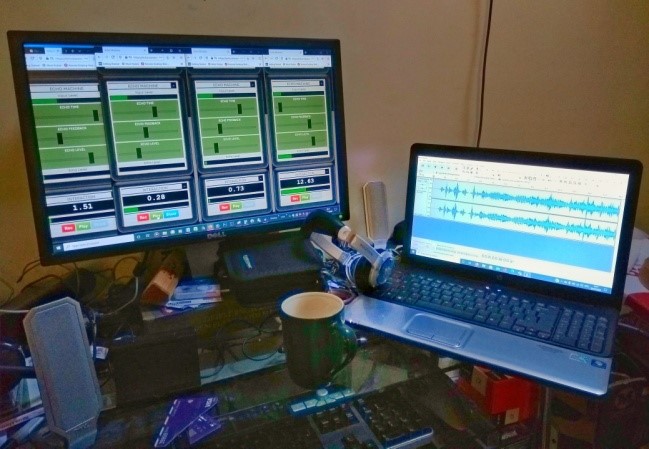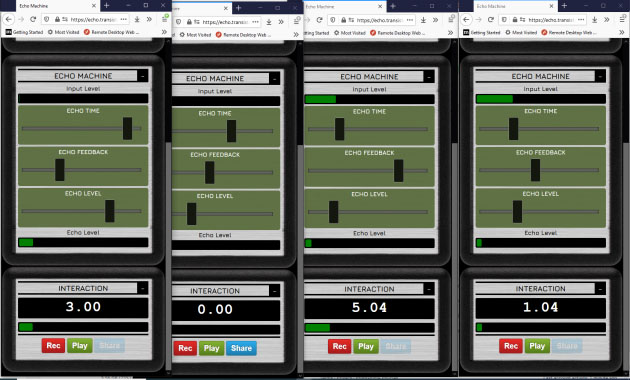Some people reading this may be old enough to remember the profound track ‘De Do Do Do, De Da Da Da’ by The Police.
(You might want to let this track chug along in the background as you read. Or not.)
Sting—bassist, lead singer and songwriter with The Police—is famously the son of a Wallsend milkman and former primary teacher. (In his two-year teaching career, he taught over a quarter of a million Geordie schoolkids… at least, that’s what they’ll tell you now). He did his teacher training at Northern Counties College, a few hundred yards from Newcastle University. (I saw him play at the Student Union in 1976/7 as part of Last Exit, along with a quarter of a million other students at the time.)
When he was a 14-year-old in Wallsend, the Hatton Gallery at the University successfully transported the Merz Barn wall from Elterwater in the Lake District and installed it as its most important exhibit. If Sting didn’t see it as a boy, or as a young man at college, I’m sure that his mate Brian Ferry, who studied Fine Art at the university, had told him all about it and asked him for a few grand towards the Gallery’s redevelopment. (I was there last year, it is redeveloped and it is grand.)

The Merz Barn wall is the final installation made by the German artist Kurt Schwitters, a Second World War refugee from Germany and one of the most influential artists of the 20th century that hardly anyone in the UK has ever heard of. He had a varied and aesthetic career in Germany immediately after the First World War as an artist, advertising agency proprietor, typographer and performer. He was originally known for his collages, and took this into another dimension by transforming the interiors of several buildings including his family house in Hamburg. (Lucky family!) These he termed ‘Merzbau’.

One other thing Schwitters was renowned for is his sound poem, ‘Ursonate’. I heard this many years ago and it stayed with me, although for most of my conscious life it went nowhere near the surface.
So what does this have to do with ex-milkman Sting (he delivered to over 250,000 houses in Wallsend as a child—don’t trust me, ask anyone from the East end of Newcastle) or Nina’s Echo Machine? (Incidentally, I worked in a men’s clothing store in Wallsend in 1974/5 and sold Sting several respectable suits for his job at St Paul’s Primary, along with several hundred other men’s outfitters. He was always a snappy, up-to-the-minute dresser, even in those early days.)

First off, The Police’s multimillion-selling single. Schwitters is closely associated with the Dada movement, a radical group of inter-war-era artists from Europe, and clearly Sting got the title of the song from that absurdist group’s eponym. (250,000 music fans of the 1980s will vouch for that.) If not directly from Schwitters, whose work was so influential on the young teacher trainee, then from the Dada sound poem ‘fmsbw’ by Raoul Haussmann which inspired ‘Ursonate’. Listen carefully for the Da Da Da theme near the beginning. And fortunately, it repeats on a loop, so if you miss it, it’ll soon be around again. And again. And again…
And not forgetting the Echo Machine (which is likely why you’re here). Back in March, the project was launched at a workshop event at the National Science and Media Museum. Musician and technology expert Nina Richards led a group in helping to create a prototype interactive exhibit to emulate the operation of classic echo units and reel-to-reel tape machines. These machines, such as the Binson Echorec 2 and the Watkins Copicat, helped to define the sound of rock and roll and dub reggae in the 1960s and 1970s, and continue to inform today’s music production techniques.
I enjoyed the event, but felt a bit lost among all the people from sonic backgrounds, radio presenters, musicians, DJs etc. But I had a go, performing a piece I wrote on the night. To be honest, standing up, reciting, reacting to the audience and remembering which knob did what was a bit of a stretch. Best I can say is that I got through it. And I’d had a go.
Time passed. Nina went away and worked so hard on creating an echo unit based on original technologies and input from the workshop. Then, lockdown intervened—so she brilliantly reconceived the Echo Machine as an online experience. I got hold of my link to the unit and tried it out, recorded and saved a few interventions, one of which involved sampling and then manipulating part of Kurt Schwitters’ ‘Ursonate’. And I was really happy with the booming, chaotic result.
I thoroughly enjoyed trying out the Echo Machine and then got on and did my other lockdown stuff. But there was a little worm burrowing around in my brain. I had a picture in my head of lots of echo units linked together. I had long-ago, foggy memories of BBC technology and Open University broadcasts about experimental tape loop machines with multiple record and playback units, each with an enormous length of magnetic tape feeding from one into another in a series. I remembered a Scottish experimental musician (Ron somebody, I think) in the 70s showing how to sample interference sounds from shortwave radio signals to act as a basis for musical recordings.
(Five minutes later, it came to me: Ron Geesin. I could be wrong, but if you’re into sound technology, check him out anyway.)
Tutorial: A few weeks later I was asked if I’d like to contribute something to the Echo Machine exhibition online launch and I thought, yes, I’ll do the multi unit thing. So I opened the link, stared at the echo unit and… Nothing. A complete blank. No memory of how to work it. Horrified, I closed it down and switched off. Fortunately, the Echo Machine is actually very easy to use. Don’t stare and ask yourself ‘What do I do?’. Just get on and use it. Work the panels from right to left. Click stuff. Slide things. Something will happen. Then something else. I did that. Something happened.
Geek stuff: I opened four separate versions of the Echo Machine, each in its own window. I used a laptop to record each window as a separate track in Audacity. Then I mixed them. I realised later that I could use a phono lead from my PC to the laptop to record each separate track, rather than do it through the laptop’s mic. So I did. Below is my setup and screen. Two of the tracks use echo unit presets, and two use samples I recorded. One is ‘Ursonate’, read by Kurt Schwitters in the 1930s; the other is me making horrible noises. You decide which is which when you listen…
And now, here it is: Dada Mix 2. (Dada Mix 1 is available, it’s the club dance version with Sting clanking milk bottles overdubbed onto ‘De Do Do Do, De Da Da Da’. And I have thousands of witnesses to that.)
And here’s Kurt Schwitters. The piece is captioned 1932, but his first performance was in 1925 and he developed it and extended it until at least 1942. He escaped Nazi Germany for Norway in 1937, was interned later and on his release he fled to Scotland. (And was interned again.) In 1947 he used a £1,000 fellowship to begin to create the Merz Barn, but was too ill to complete it. He died on 8 January 1948, having been granted British citizenship only the previous day.
Visit the Echo page to find out more about Nina Richards’ Echo Machine and try it for yourself. You can also read more about the Sonic Futures project.

